Volunteer Caroline Wessel investigates the gift of books from the library of Thomas Fielding Johnson in 1921.
The Leicester Mercury reported on May 28 1921 that,
Mrs W. Wallace Bruce, daughter of the late Mr Fielding Johnson, has given to the College, in memory of her father, a valuable collection of books. Among the leading items are the famous Dictionary of National Biography in some 70 large volumes; the Encyclopaedia Britannica; Gould’s “British Birds”; Byron in 16 volumes; Fielding (library edition limited to 1,000 copies) in 10 large volumes; Fairbairn’s “Book of Crests”; the Waverley novels in 12 large volumes; Gibbon’s “Rome” 8 volumes; Jowett’s “Plato”.
Leicester Mercury, 28 May 1921.
At the College Grand Bazaar in 1922 the ‘rare and beautiful volumes from the Fielding Johnson library were on display on the Leicester College stall.
The present-day catalogue in the University Library’s Special Collections lists 193 publications given by Mrs Bruce, plus a further thirty in the name of her father. These rare and valuable volumes, mostly in surprisingly good condition, are now housed in the Basement Rare Books section of the Library, and can be viewed by appointment.
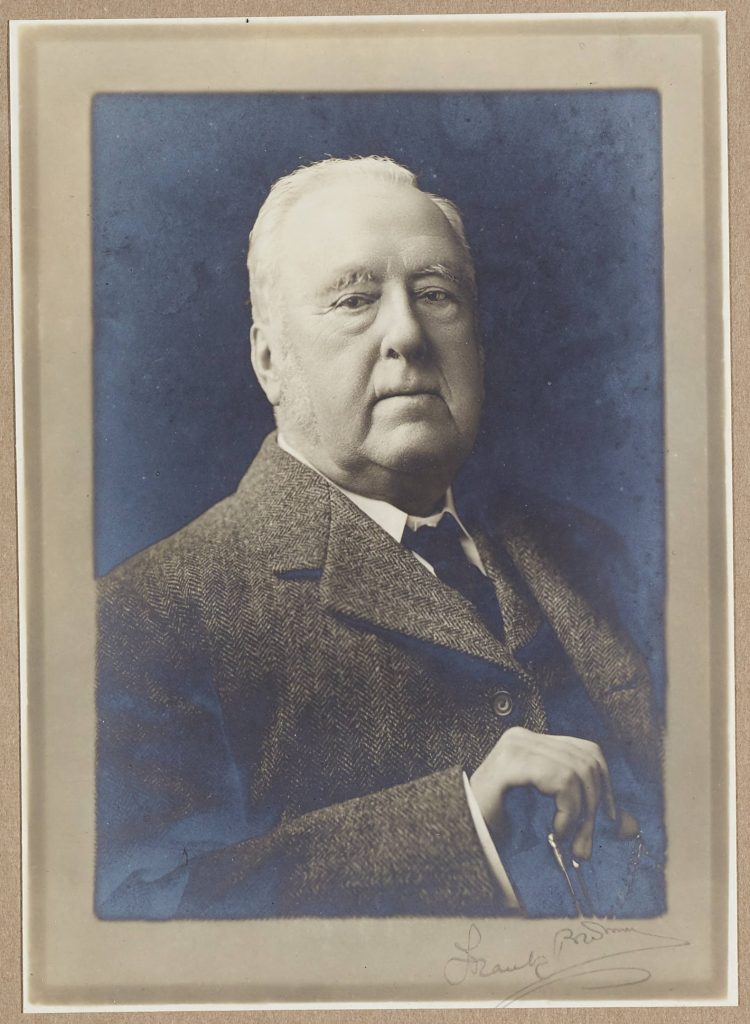
Thomas Fielding Johnson (1828-1921) was the wealthy and generous industrialist and philanthropist who in 1919, at the age of 91, purchased Leicester’s former WW1 military hospital, to serve as the site of a new university college, now the University of Leicester – hence the naming of the principal administrative building as the Fielding Johnson. He lived at Brookfield, an impressive residence set in grounds that later became the Charles Frears School of Nursing, and is now the University’s School of Business. On Joseph Goddard’s architectural plans (1877) for extending Brookfield no room is marked as ‘Library’, so probably the book collection was kept in the study. Furthermore, an order book (1892-1897) of the renowned Victorian architect and furniture designer, George Faulkner Armitage, who sometimes worked with Goddard, lists supplying Mr Johnson of Brookfield with ‘one Marble slip [fireplace surround], one door, four mantels, six bookcases and two Corner seats’. No doubt these six bookcases were to house the precious tomes now at the University and the corner seats were cosy reading areas.
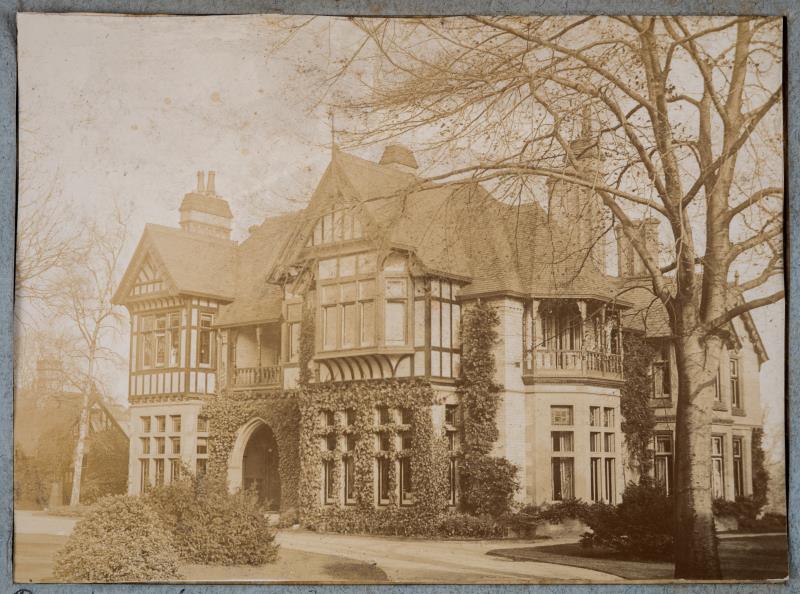

Some of the books have Thomas’s heraldic bookplate on their inside front cover, and in tribute to him, the crest of his coat-of-arms was chosen as the crest of the new University’s arms. Fairbairn’s Crests,one of the hefty volumes in the Brookfield library, lists the crest of Johnson of Leicester as – a demi-griffin gules (red), collared ermine (fur), between its claws a pheon (barbed head of an arrow) or (gold); but on the University crest the pheon is substituted for a book, to denote learning. Burton’s Description of Leicester (1777), bearing Johnson’s heraldic bookplate, is of particular interest, being a Grangerized version, that is having many nineteenth-century additional handwritten inserts and embellishments.

Mrs Bruce (1864-1942), the donor of the collection, was Thomas’s daughter by his second wife, Agnes (née) Paget. She was married to William Wallace Bruce (1846-1907), schoolteacher, writer and editor, and a Labour Progressive Party member of the London County Council during the years 1892 to 1904. But, although Agnes Mabel (known as Mabel) Bruce lived mainly in London, a delightful Fielding Johnson family photo album depicts the many joyful highlights of her six young daughters’ holiday times at Brookfield, with its working farm and a brook running through its grounds. In recognition of her gift of books Mabel Bruce was made a Life Governor of the College.
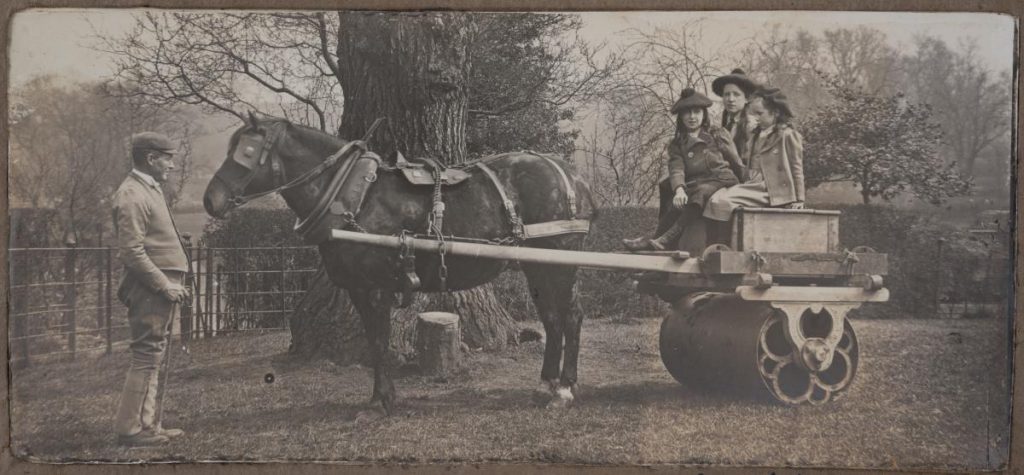
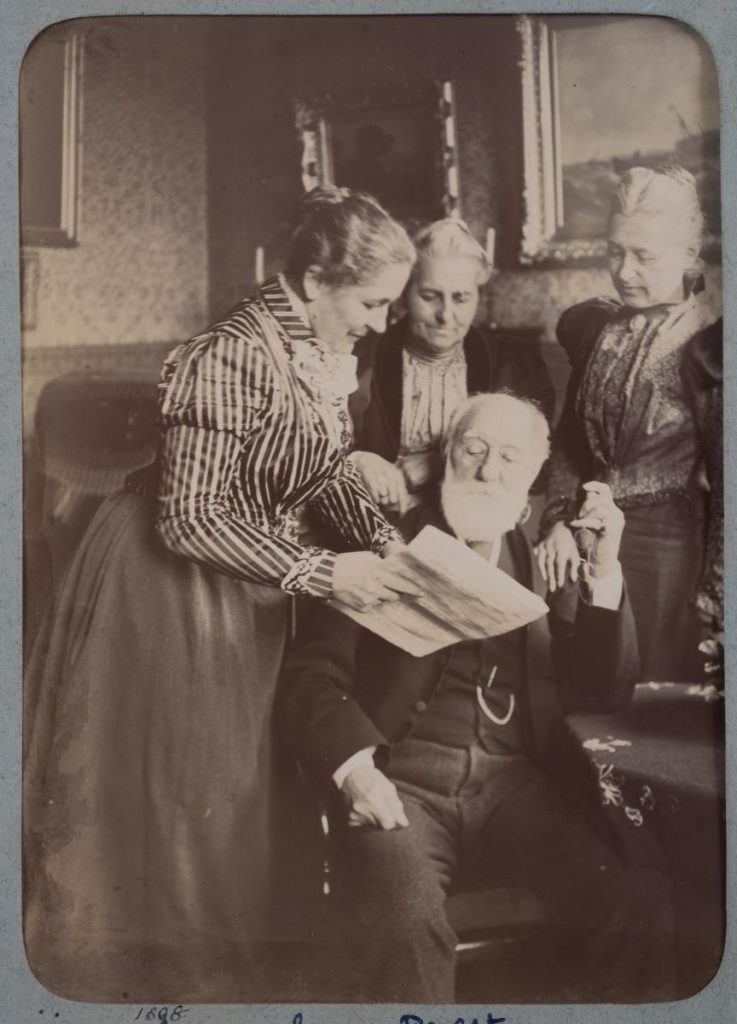
The Special Collections catalogue tells us a good deal about the literary and scholarly tastes of the family, a number of whom were extremely cultured and well-read. Agnes Fielding Johnson’s father, solicitor Alfred Paget, was in 1835 a founder of the Leicester Literary & Philosophical Society, a President of the Leicester School of Art, and a Liberal and Nonconformist committed to radical reform. Mrs Johnson’s brother, Alfred Henry Paget, an architect and partner of Goddard, was a London University graduate and prize-winner and a renowned Shakespearian scholar. His wife, Jennie (née) Clephan, regularly attended Leicester Secular Society lectures and was a member of the Leicester Ladies’ Reading Society. This was a group of aspiring middle class ladies who wished to improve themselves intellectually (no novels allowed!), to which the cultured and well-travelled Mrs Florence Fielding Johnson junior also belonged. No doubt other visitors at Brookfield included members of the Huxley family, as Mrs Bruce’s daughter, Rosalind, was married to Leonard Huxley, father of the evolutionary biologist Julian Huxley and writer and philosopher Aldous Huxley. Leonard and Rosalind’s own son, Sir Andrew Fielding Huxley, won the 1962 Nobel Prize in Physiology and in 1967 received an Honorary Doctorate from the University of Leicester.
Clearly there were some Sir Walter Scott fans at Brookfield because on one of its six bookshelves were 37 of his ‘Waverley’ historical romance novels – that for nearly a century were amongst the most popular and widely read fiction in Europe. The family’s Henry Fielding novels were known for their rich, earthy humour and satirical prowess, so were perhaps not so suitable for the ladies of the house. The poetry of Lord Byron was also a Fielding Johnson favourite, meriting 17 volumes, but there were only five by the popular poet Lord Tennyson. Homer’s Iliad, Gibbons Rome and Jowett’s Plato identify someone with Classical interests; and books on Ancient Egypt include three on learning Egyptian grammar – surely a challenging mental task. Travel books, local history from John Leland and William Burton, pictures and text on National Gallery portraits, and pieces by philosopher Thomas Carlisle and politician Lord Macaulay, all point to a readership with enquiring minds, seeking intellectual stimulation and no doubt engaging in lively family discussions.
There are two publications of interest by influential female authors – seven volumes of poetry by Felicia Hemans, immensely popular at the time especially with female readers, that give beautiful descriptions of nature, love, and the feelings of women; and Dreams by Olive Schreiner, a South African author, well known as an intellectual and anti-war campaigner.
But maybe the greatest joy of all is the perfection of the brightly coloured bird images in John Gould’s five massive leather-bound tomes, Birds of Great Britain (1862-73). As a taxidermist, he knew exactly the bone structure and shape of every bird, most of which are shown with their young and in natural habitat. Perhaps some of the Fielding Johnson family were keen bird watchers in the grounds of Brookfield, then an idyllic rural location.


There are a goodly number of music scores in the book collection, mostly sacred choral works with piano or organ accompaniment, that include Haydn Masses, Te Deums, Selected Sacred Melodies, Cathedral Music and – for light relief – some Elizabethan madrigals. Each score bears the signature of Agnes’s father, Alfred Paget, whom composer William Gardiner referred to as ‘my friend (tenore)’; so no doubt the rich timbre of Alfred’s tenor voice was often to be heard in the Brookfield drawing room. For daily entries in a contemporary Paget diary record that pleasant musical evenings were often spent at the homes of family or friends at a time when the main entertainment for social life was amateur music-making.
Mrs Bruce’s mother, Agnes Fielding Johnson, was herself an acknowledged author. In 1891 she published Glimpses of Ancient Leicester, many of whose charming illustrations were drawn by her talented sister, Lizzie Paget. In 1892 The Antiquary gave it a four-page review, saying
This is a pleasant and attractive, though certainly not a superficial book. We have no hesitation in saying … that Leicester is to be specially congratulated on having its story told in so exceptionally able and bright a manner and with such a freedom from those errors that may please a carping critic to detect.
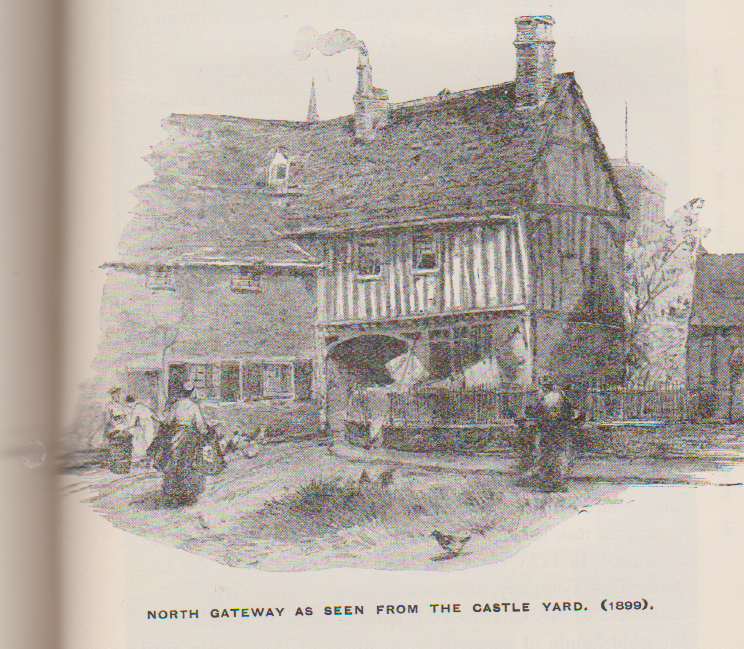
Long keen on education, and a founder and governor of Wyggeston Girls School, Mrs Johnson used to give a copy of her Glimpses to every boy and girl leaving the Wyggeston Schools. She died in 1917, two years before her husband’s death, but clearly during her married life she created a happy family home where reading a wide range of literature was encouraged, as testified by the Fielding Johnson collection now proudly residing at the University.
Key sources
Fielding Johnson family photo album (privately owned)
Joseph Goddard’s original architectural drawings, housed at ISKCON, Leicester
Gill Fitzpatrick, retired librarian, research on G.F. Armitage
Burch, Brian (unpublished, undated) The Making of a University in Leicester ULA/D12/1
Fielding Johnson, Mrs (1891) Glimpses of Ancient Leicester. The author
Spencer, J & R (1889) Antiquarian Gleaner
Wessel, C. ‘Leicester Ladies Reading Society’in Leicestershire Historian (2009) LAHS